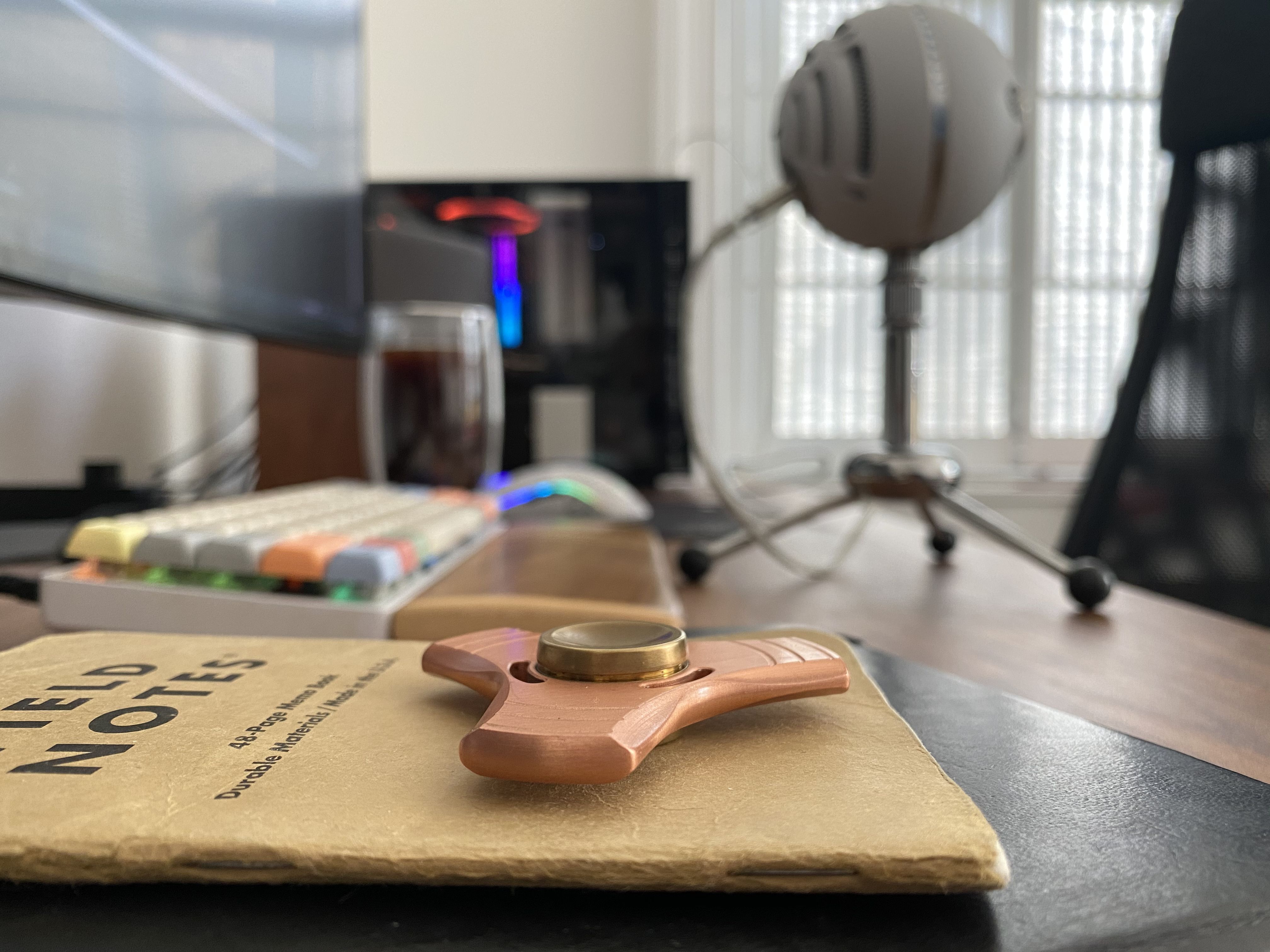Working from Home on Minimal Notice
On Sunday, March 15th the governor required all nonessential state employees to work from home, including all of us at the MTA. While the IT department directed employees to use Teams and Webex for remote work, unfortunately the organization also had a fairly active Slack subscription as well...

Note: As it says on my author page, these words are my own, and do not reflect any official stance of my employer. This was my experience with the transition, with a few lessons that you've probably already figured out yourself along the way.
Early Days
On March 1st, 2020, NYC got its first confirmation of COVID-19. Despite everything, most political leadership was still supportive of people continuing to lead their daily lives. The mayor even rode a full stop on the Subway to show that it was still safe to ride. While you can read more about the public timeline on that Wikipedia page, between all the media reports and everything else at the time it seemed to me like the pandemic was under control in the city for the time being. I was washing my hands more and had stopped touching my face so much, but I was still buying lunch out, going out for a drinks with friends, ordering delivery... mostly continuing to lead my life normally.
I had already planned a trip to Arizona several months beforehand since my wife was having a very belated bachelorette party, so I naturally left that week to go visit a friend there. I want to reiterate that at that point, the advice from the top had been to continue to go about life normally, albeit paying more attention to hygiene. While in the airport and on the flight, I was again very careful about washing hands and not touching my face, which most folks still thought was enough to stay healthy as long as you stayed away from coughing people. On the plus side, I had a wonderful time.

On March 7th, the governor here in NY ordered a State of Emergency, although again it felt like the virus was still somewhat contained in NYC, since almost all of the positive cases were in New Rochelle, north of the city in Westchester, NY. I got back from my trip, and even though the official recommendation now was to avoid dense subway travel and work from home or bike if possible, we still had no real work from home policy, because there hadn't been a need for one.
Preparing to Work from Home when Work Won't Let You

As you may already know, I work for New York City Transit, which means I indirectly work for the New York State government. Like any organization with a long history and 72,000 employees, there have been folks every now and then who took advantage of of their work environment to cheat on their timesheets. As a natural, if disappointing, response to scandals about workers making up hours, the agency requires us to swipe in and out on Kronos timeclocks, verifying a finger print each time. My guess is the theory was that if you had to swipe in the office, then your manager would be able to better hold you accountable, and it makes it much easier to track down someone who is gaming the system. The trade-off to these requirements is that most non-managerial staff can easily get credit for overtime hours under normal circumstances.
Why does it matter that we have timeclocks and need to punch in and out every day?
- It means we all have desktop PCs.
The IT department had no reason to purchase laptops for employees, because desktops are cheaper, and they knew that office staff would be in the office. Most departments would get one or two laptops to share in case anyone had to go out in the field. - It means we have no scalable VPN to remotely access the network.
If everyone in the office has desktops, and you have to swipe in to count your hours at the office, then there was never a reason to develop a scalable corporate VPN to make it possible to access share drives or database servers externally. Heck, we can't even connect to these servers on office WiFi, only through ethernet. - It meant we collaborated by creating fifteen versions of a document on those local share drives instead of using Google Docs or OneDrive/SharePoint, until recently (with a few exceptions).
Since (almost) every single person who works at the office needs to clock in and out to record their hours, even if I could have completed some of my work from home just using Microsoft Office, I would not have been able to get credit for any of those hours. Most of our servers and share drive are only accessible from the internal network though, which means 70-80% of the work I do in a normal week used to require me to be on site.
On the opposite end of the spectrum from the IT issues above, the agency also had a really strong and positive culture of not bringing work home with you, which meant there was little demand from most office employees to be able to work remotely, even if they could have gotten credit. Many of us had e-mail on our phones, and a select few had Slack install too, to report issues we saw in the system in a #getitfixed channel, but almost nobody had set up remote desktop support (our only way to work from outside the office).
Looking back through my e-mail, following Governor Cuomo's declaration of a State of Emergency, I requested remote desktop access for myself and told my direct reports to request it, but we did not get IT approval until after our last day in the office. Since it is not possible to connect to the remote desktop service on the employee WiFi or the desktop ethernet, none of us were able to test our new remote desktop connection, which would have been nice given that many folks only got approved for a Windows VM, and not for direct remote access to their own computer. On that last Friday, we started telling everyone to back up their documents to our enterprise OneDrive accounts with little idea of whether we would be allowed or able to work from home or whether anyone would be allowed in the office.
Setting up Workflows and Establishing Boundaries

On Sunday, March 15th the governor required all nonessential state employees to work from home, including all of us at the MTA. While the IT department directed employees to use Teams and Webex for remote work, unfortunately the organization also had a fairly active Slack subscription as well. Of course, Slack costs enterprise users a fair bit of money, while Teams comes included with any Office365. In those early days, I also took part in a lot of free and paid unofficial Zoom chats as well.
As expected, the first few days were absolute technology disasters. Many of my coworkers were completely unable to log into their Citrix VM. Even fewer were actually able to remote into their personal desktops at work (necessary since you can't install software on the VMs). The tech oriented teams who had been using Slack beforehand continued to use Slack, while others in the department were trying to use Teams. Webex gave up entirely under the increased load. Thankfully, I worked in tech support for three years in college, which meant I've had plenty of practice helping folks with different levels of tech proficiency. By spending a lot of time on Facetime with my coworkers, along with a dash of TeamViewer, we were able to get everyone successfully working from home, and we were evn able to set up SQL Developer and DBeaver on the Citrix VMs without admin rights for those who could not access their desktops remotely (although performance was lacking).
After awhile, everyone settled into a comfortable routine, with only the occasional interruption every now and then when Citrix kicks someone out. I decided we would use Slack for messaging, mostly by choosing Slack instead of Teams when coworkers asked me to help them get set up. I created a channel for our team, and our deputy chief started posting daily updates for everyone there, bringing more people in. It also helped that most folks were having trouble figuring out how to create a new channel in Teams, and we have a lot of fun custom emojis in Slack. Instead of messaging, we've used Teams for video chats with other departments, and as a backup for whenever Jitsi Meet doesn't work (as Zoom is now banned for internal meetings at NYCT).
Before we all started working from home, I met with my direct reports for 1-on-1s once per week, which continued, now over Facetime. Slack has replaced the interactions that we would have had at a cubicle, and e-mail has kept it's original purpose. We migrated a lot of the information on our share drives to our corporate OneDrive's, since the base package comes with a full terabyte of storage. Because the organization was too large to have all functions in the same place anyway, most HR functions happen via fax or e-mail anyway. There is only one problem we haven't figured out... there is no way to boot a computer over LAN, so if someone's office desktop blue screens or fails to reboot after updates, they lose access until the next time someone happens to be there.
Things I Could have Done Better
Looking back, there were a few things I wish we had done better for the transition:
- I should have done a dry run of the work from home setup, minus remote desktop access, with my coworkers the week beforehand. Many of them hadn't used Office365 or Google Docs before, so they weren't used to having multiple people edit a file simultaneously through a browser, rather than having a v1, v2, v2_final, v3_final_justjensen_v1, etc.
- Early on in the quarantine, I focused primarily on my own projects, while I was waiting for some of the analysts to get their remote desktop access set up correctly. I should have shifted sooner to knowledge sharing instead, since there were plenty of coding issues they could have dressed without direct access.
- I really needed to put together remote work communication guidelines to hand out while we were still at the office. I am sure folks would still have had questions, but instead I ended up relating the majority of Gitlab's recommendations individually about when to use Slack, e-mail, Teams, etc.
- I messed up the coffee shipments, and my wife and I went a morning without a cup of coffee. Not great.
Moving forward, it should be pretty easy to fix these problems, and we haven't run out of coffee since.